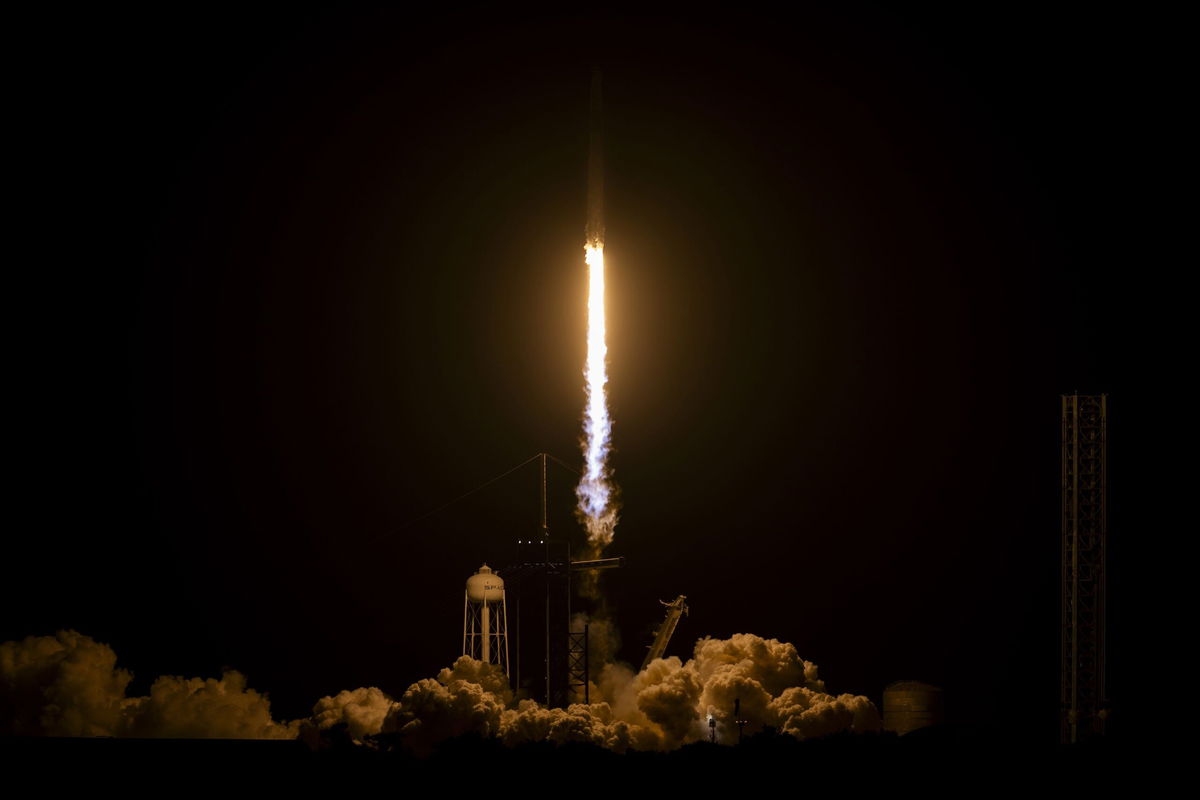SpaceX capsule docks at space station carrying 4 astronauts from 4 countries

The Crew-7 astronauts
By Jackie Wattles, CNN
(CNN) — Astronauts aboard a SpaceX Crew Dragon capsule docked Sunday at the International Space Station, concluding a one-day trip to rendezvous with the orbiting laboratory after launching from Florida.
The capsule made first contact with the space station at 9:16 a.m. ET Sunday and its hatches opened at 10:58 a.m. ET.
Hailing from four countries — making this mission, called Crew-7, the most nationally diverse SpaceX mission to date — the astronauts include NASA’s Jasmin Moghbeli, the mission commander; Danish astronaut Andreas Mogensen of the European Space Agency; Satoshi Furukawa of the Japan Aerospace Exploration Agency, or JAXA; and Russian cosmonaut Konstantin Borisov of Roscosmos.
The four launched aboard the Crew Dragon spacecraft atop a SpaceX Falcon 9 rocket from NASA’s Kennedy Space Center in Florida at 3:27 a.m. ET Saturday, and they’ve spent the last day free-flying aboard the 13-foot-wide capsule as it slowly maneuvered toward the space station.
Crew-7’s mission
Moghbeli, Mogensen, Furukawa and Borisov are joining the seven astronauts already on the orbiting laboratory.
The Crew-7 astronauts will spend about five days taking over operations from the SpaceX Crew-6 astronauts, who have been on the space station since March.
The new team will then bid farewell to the SpaceX Crew-6 astronauts, who will return home aboard their spacecraft, the Crew Dragon Endeavour, in the coming days.
This mission marks the eighth flight operated by NASA and SpaceX as part of the agency’s commercial crew program, which has been ferrying astronauts to the space station since SpaceX’s first crewed mission in 2020.
During their stay on the space station, which is expected to last about 180 days, the Crew-7 astronauts will pore through a slate of experiments. The research will include investigating the potential risk of dispersion of bacteria and fungi from human-led space missions. The team will analyze whether the microorganisms can be expelled from the space station’s vents and spewed into the vacuum of space.
Another project, from the ESA, will investigate how sleeping in the microgravity environment differs from Earth by analyzing astronauts’ brain waves while they doze off. Yet another experiment will look at the formation of biofilms in wastewater on the space station, which could be key to finding better ways to recycle water for drinking and hygiene while in space. (Yes, astronauts have long used recycled sweat and urine to drink and shower on the station.)
Furukawa, one of only two crew members who has flown to space, said during a news conference this month that he looks forward to reinhabiting the microgravity environment on the space station and delving into scientific pursuits, including research that could aid the development of new medicine and projects that could help inform how humans can one day explore the moon.
Mogensen is the other veteran of spaceflight on this mission. Borisov and NASA’s Moghbeli are both on their first.
“This is something I’ve wanted to do for as long as I can remember,” Moghbeli said during a July 25 news conference. “One of the things I’m most excited about is looking back at our beautiful planet. Everyone I’ve talked to who has flown already has said that was kind of a life-changing perspective.”
The-CNN-Wire
™ & © 2023 Cable News Network, Inc., a Warner Bros. Discovery Company. All rights reserved.